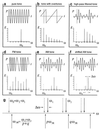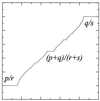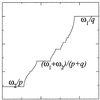Pitch perception: a dynamical-systems perspective
- PMID: 11320234
- PMCID: PMC33127
- DOI: 10.1073/pnas.081070998
Pitch perception: a dynamical-systems perspective
Abstract
Two and a half millennia ago Pythagoras initiated the scientific study of the pitch of sounds; yet our understanding of the mechanisms of pitch perception remains incomplete. Physical models of pitch perception try to explain from elementary principles why certain physical characteristics of the stimulus lead to particular pitch sensations. There are two broad categories of pitch-perception models: place or spectral models consider that pitch is mainly related to the Fourier spectrum of the stimulus, whereas for periodicity or temporal models its characteristics in the time domain are more important. Current models from either class are usually computationally intensive, implementing a series of steps more or less supported by auditory physiology. However, the brain has to analyze and react in real time to an enormous amount of information from the ear and other senses. How is all this information efficiently represented and processed in the nervous system? A proposal of nonlinear and complex systems research is that dynamical attractors may form the basis of neural information processing. Because the auditory system is a complex and highly nonlinear dynamical system, it is natural to suppose that dynamical attractors may carry perceptual and functional meaning. Here we show that this idea, scarcely developed in current pitch models, can be successfully applied to pitch perception.
Figures




References
-
- Yost W A. J Acoust Soc Am. 1996;100:511–518. - PubMed
-
- Bregman A S. Auditory Scene Analysis: The Perceptual Organization of Sound. Cambridge, MA: MIT Press; 1990.
-
- Hartmann W M. J Acoust Soc Am. 1996;100:3491–3502. - PubMed
-
- Roberts B, Bayley P J. J Exp Psychol. 1996;22:604–614. - PubMed
-
- Moore B C J. An Introduction to the Psychology of Hearing. New York: Academic; 1997.
Publication types
MeSH terms
LinkOut - more resources
Full Text Sources
Other Literature Sources

